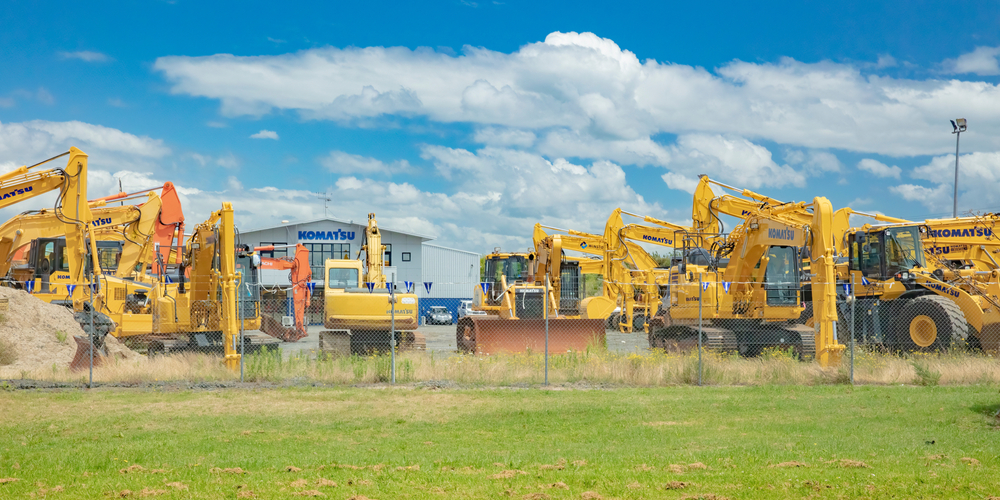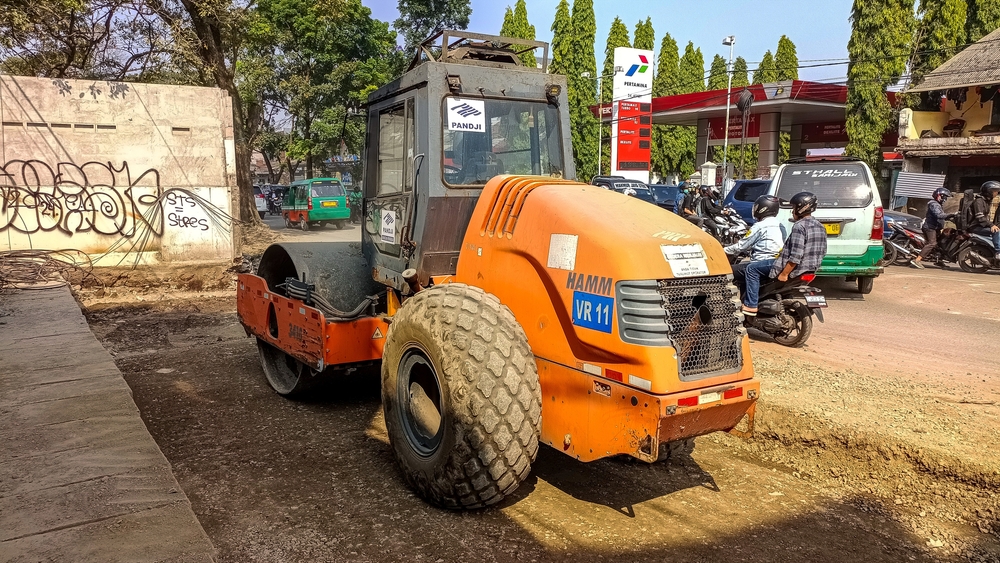Selecting the right loader for a construction project is a decision that can significantly influence the efficiency, cost, and overall success of the operation. Understanding the distinctions between wheel loaders and backhoe loaders is crucial for construction professionals and project managers aiming to make informed equipment choices. This comparison, focusing on both wheel loaders and backhoe loaders, delves into their features, applications, and suitability for various construction scenarios, providing a foundation for making the best selection for your specific needs.
Understanding Wheel & Backhoe Loaders
Wheel Loaders
Wheel loaders are heavy equipment machines characterized by their large front-mounted buckets, which are designed for moving loose materials. These loaders are known for their mobility, versatility, and high capacity, making them ideal for tasks that require material transportation over relatively short distances.
Advantages of wheel loaders include their speed and efficiency in loading and unloading materials, such as soil, sand, or gravel. Specific applications where wheel loaders excel include material handling, stockpiling, and loading tasks in quarries, construction sites, and landscaping projects.
Backhoe Loaders
Backhoe loaders, on the other hand, are versatile, multi-functional machines equipped with a shovel at the front and a backhoe at the rear. This design allows them to perform a wide range of tasks, from digging and backfilling to trenching and material handling. Backhoe loaders are particularly valued for their versatility and ability to navigate in tight spaces, making them suitable for urban construction projects, utility work, and small to medium-sized landscaping projects.
The advantage of backhoe loaders lies in their dual functionality, offering both digging depth and material handling capabilities in a single piece of equipment.
Comparative Analysis
When weighing the options between a wheel loader and a backhoe loader, several key factors come into play.
| Feature | Wheel Loader | Backhoe Loader |
| Size | Larger, designed for bulk material handling | Compact, versatile for varied tasks |
| Mobility | Fast on open ground, less maneuverable in tight spaces | More maneuverable, suitable for confined spaces |
| Digging Depth | Limited to surface scraping and loading | Up to 14-16 feet (4.3-4.9 meters) |
| Lifting Capacity | Around 1.5 – 20 tons, depending on model and size | Typically up to 1 – 1.2 tons at the backhoe end |
| Versatility | Primarily for material loading and moving | Excavating, trenching, material handling, and more |
| Application | Best for mining, quarrying, and large construction sites | Ideal for smaller construction, utility work, and landscaping |
Wheel Loaders: These machines are known for their substantial loading and material handling capacities. Their bucket capacities can range widely from as little as 1 cubic yard (0.76 cubic meters) in smaller models to over 5 cubic yards (3.8 cubic meters) in larger models, making them suitable for a variety of material handling tasks.
Backhoe Loaders: Backhoe loaders offer a versatile combination of digging and lifting. The backhoe end can typically dig to depths of 14-16 feet (4.3-4.9 meters), depending on the model and configuration. The loader end, while not matching the capacity of a dedicated wheel loader, is proficient in handling materials with bucket capacities usually up to 1 cubic yard (0.76 cubic meters), providing a good balance of lifting and excavation capability in one machine.
Applications and Use Cases
Wheel loaders excel in scenarios where the primary need is the rapid movement of materials. Their large buckets and high lifting capacity make them perfect for mining operations, large earthmoving projects, and any situation where bulk material needs to be transported efficiently over short distances. On construction sites, wheel loaders are invaluable for quickly clearing debris, transferring building materials, and loading trucks.
Backhoe loaders, with their unique dual-end functionality, shine in versatility. They are indispensable for urban construction projects where space is limited and versatility is key. Tasks such as digging for foundations, trenching for utilities, backfilling, and even breaking asphalt can all be performed with a backhoe loader. Their compact size and maneuverability also make them ideal for landscaping projects, small demolitions, and roadwork, offering a combination of excavation depth and material handling capability that is unmatched by other single pieces of equipment.
Cost Analysis
The initial acquisition cost and long-term operational expenses of wheel loaders and backhoe loaders can significantly impact the overall budget of a construction project. Wheel loaders, given their larger size and capacity, typically command a higher initial purchase price. However, their efficiency in handling large volumes of material can lead to operational cost savings, particularly on large projects where their capabilities can be fully utilized.
Backhoe loaders, often more affordable in terms of initial cost, offer an excellent value proposition through their versatility and dual-function capability. This can potentially save costs by reducing the need for multiple pieces of equipment on a project. However, factors such as fuel consumption, maintenance requirements, and the need for different attachments should be considered in the total cost of ownership.
Long-term expenses for both types of loaders include maintenance and repairs, fuel, and operator training. Regular maintenance is critical to prevent downtime and extend the equipment’s lifespan, while fuel costs can vary based on the efficiency of the machine and the intensity of use. Additionally, ensuring operators are well-trained can optimize the equipment’s operation, further affecting overall project costs.
Maintenance and Upkeep
Maintenance requirements for wheel loaders and backhoe loaders include regular inspections, fluid and filter changes, and component checks to ensure optimal performance.
Wheel loaders may require more frequent maintenance of the bucket and loading mechanisms due to the heavy loads they manage. Backhoe loaders, with their complex hydraulic systems for both front and rear attachments, necessitate thorough routine checks to prevent hydraulic system issues.
ESP Ltd’s Recommendations
Choosing between a wheel loader and a backhoe loader depends on the specific needs of your construction project. For large-scale material handling and efficiency in loading operations, a wheel loader is an optimal choice. For projects requiring versatility, precision in excavation, and the ability to work in confined spaces, a backhoe loader is more suitable.
ESP Ltd offers personalized advice and equipment solutions to match the unique demands of your project. We encourage you to contact ESP for expert recommendations that cater to your specific construction needs, ensuring you select the equipment that best supports your project objectives.









